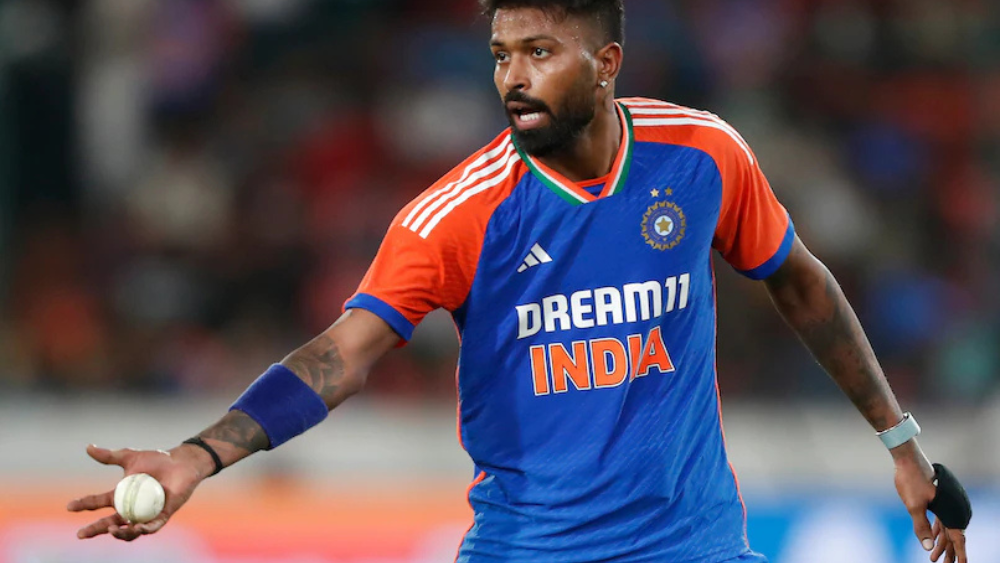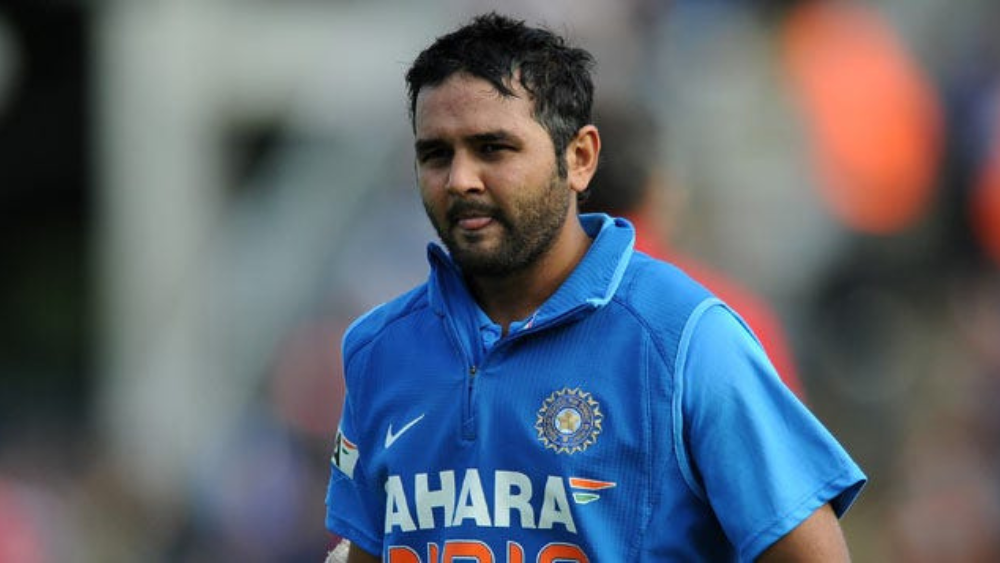India’s 26-run loss to England in the 3rd T20I exposed batting flaws, despite Pandya’s effort and Chakravarthy’s 5-wicket haul.
Table of Contents
India’s successful run in the ongoing T20I series against England came to a surprising halt in the third match. After winning the first two games, India seemed poised to take control of the series, but a 26-run defeat in Rajkot left the hosts reeling. Despite restricting England to a manageable total of 171/9 after opting to bowl first, India faltered in their chase, managing only 145/9. This unexpected loss shifted the series scoreline to 2-1 in favor of England, raising questions about India’s performance and strategy.
The Batting Collapse: A Story of Missed Opportunities
India’s chase was marked by regular wickets falling at critical stages. The batting lineup, which had been solid in previous matches, failed to come together when it mattered most. The team struggled to find any real partnerships, with no batter stepping up to guide the team toward victory. Hardik Pandya’s 40 runs off 35 balls were the only substantial contribution in the innings, but his efforts were overshadowed by the consistent fall of wickets at the other end.
The Indian batsmen’s inability to cope with the pressure of the chase and their failure to rotate the strike meant that the required run rate kept escalating, making the task even more difficult. The collapse of the middle order left India with little hope of crossing the line, and the defeat was ultimately inevitable.
Pandya’s Slow Start: A Key Criticism
One of the main talking points after India’s defeat was Hardik Pandya’s slow start to his innings. While his eventual score of 40 runs was crucial, it came at the cost of consuming too many balls in the early stages. Pandya’s failure to score quickly at the start of his innings was a key factor in India’s inability to build momentum. His innings was marked by a significant number of dot balls, which not only put pressure on him but also on the other batters who followed.
Former India wicketkeeper Parthiv Patel was particularly vocal about Pandya’s approach. In the post-match analysis on Star Sports, Patel pointed out that in T20 cricket, a batter cannot afford to take 20-25 balls to settle in. “You have to rotate the strike and keep the pressure on the opposition,” Patel explained, stressing that Pandya’s slow start had a negative impact on the team’s overall performance.

Parthiv Patel’s Analysis: The Need for Quick Adaptation
Parthiv Patel’s analysis of Pandya’s innings revealed his concerns about the pace at which the batter approached the game. While acknowledging the importance of settling in, Patel emphasized that in T20 cricket, particularly during a chase, the need for rapid scoring is paramount. “You can’t take 20-25 balls to get set,” Patel reiterated. He noted that Pandya’s inability to rotate the strike early on contributed to the mounting pressure, which ultimately derailed India’s chase.
For Patel, the key to success in T20s is quick adaptation to the conditions and the need to keep the scoreboard ticking over, even if a batter has to take their time to find their rhythm. Pandya’s approach, in this case, was criticized for not balancing patience with urgency.

Kevin Pietersen’s Critique: India’s Batting Order Misstep
While the focus was primarily on the batting performance of the top order, former England captain Kevin Pietersen offered an interesting perspective on India’s batting lineup. He questioned the decision to send Dhruv Jurel in at No.8 in the batting order. Pietersen believes that Jurel, who is a capable and accomplished batter, should have been placed higher in the order.
“India didn’t get the batting order right,” Pietersen said. “Jurel is a proper batsman, and having him down at No.8 wasn’t the right call.” According to Pietersen, sending Jurel in lower down the order not only wasted his potential but also disrupted the flow of the innings. He argued that teams should send their best batters up the order, especially when chasing a challenging target.

Batting Order Strategy: The Need for Optimization
Pietersen further elaborated on the importance of optimizing the batting order in T20 cricket. He noted that while a left-right combination at the top of the order can be useful, it should not come at the cost of sending in your best batters. “The left-right combination is alright till No.4,” Pietersen added, “but after that, you should send your best batters, no matter the combination.”
For Pietersen, the decision to push Jurel down the order reflected a lack of flexibility in India’s batting strategy. He suggested that India missed an opportunity by not utilizing Jurel’s full potential in the higher order, where he could have made a greater impact on the game.
Varun Chakravarthy’s Heroics: A Standout Performance in a Losing Cause
Despite the team’s defeat, there was one shining light for India in the form of spinner Varun Chakravarthy. In a match dominated by England’s batting and India’s faltering chase, Chakravarthy delivered a spectacular individual performance. The mystery spinner claimed five wickets, finishing with figures of 5/24 from his four overs, including the wickets of some of England’s key players.
Chakravarthy’s spell was crucial in keeping India in the game, as he took wickets at regular intervals to halt England’s progress. His victims included England’s captain Jos Buttler, Jamie Smith, Jamie Overton, Brydon Carse, and Jofra Archer, all of whom are key contributors to the English side.
A Bright Future for Chakravarthy: India’s T20I Asset
Chakravarthy’s brilliant performance highlighted his growing importance in India’s T20I setup. Since his return to the national team last year, after a brief absence, Chakravarthy has quickly established himself as one of India’s premier spinners in the shortest format of the game. His ability to take wickets in pressure situations and his knack for breaking partnerships has made him an invaluable asset for India.
As India looks ahead to future T20I series and tournaments, Chakravarthy’s form will be crucial to their chances. His performances in the ongoing series serve as a reminder of his ability to rise to the occasion, even when the team is underperforming.

India’s Path Forward: Lessons to Be Learned
With the series now standing at 2-1 in favor of England, India has a lot to reflect on. The third T20I exposed weaknesses in their batting strategy, especially in the chase, and highlighted the need for quick adaptation in the fast-paced format. The failure to rotate the strike and the mismanagement of the batting order were key areas of concern for the team.
Moving forward, India will need to reassess their approach to batting in T20Is. The top order will need to take more responsibility in providing a solid foundation for the team, while the middle order must be flexible enough to adapt to changing match situations.
The Next Steps: A Strong Response Required
India will need to come back stronger in the remaining matches of the series to regain their momentum. With the series still within reach, the team has the opportunity to make amends and adjust their strategy to secure victory. Players like Hardik Pandya and Dhruv Jurel will need to lead from the front, while the team as a whole must focus on building partnerships and rotating the strike effectively.
The upcoming matches will be critical in determining the outcome of the series, and India’s response to this setback will be crucial to their chances of leveling the score. With a combination of strong individual performances and a cohesive team strategy, India will be aiming to bounce back and take control of the series.
FAQs
What caused India’s defeat in the 3rd T20I against England?
India’s batting collapsed under pressure, with regular wickets falling during the chase, despite Hardik Pandya’s effort and Varun Chakravarthy’s 5-wicket haul.
Why was Hardik Pandya criticized after the 3rd T20I?
Pandya was criticized for his slow start, consuming too many balls early in his innings, which hindered India’s chase.
Who stood out for India in the 3rd T20I against England?
Varun Chakravarthy was the standout performer, taking 5 wickets for 24 runs, including key dismissals of England’s top players.
How did England perform in the 3rd T20I?
England posted a total of 171/9, with key contributions from their middle order, but India’s inability to chase the target led to their defeat.
What was Parthiv Patel’s opinion on Hardik Pandya’s performance?
Parthiv Patel criticized Pandya for taking too long to get set and not rotating the strike, leading to pressure on the other batters.
Why was Dhruv Jurel sent lower down the batting order?
Kevin Pietersen questioned India’s decision to bat Dhruv Jurel at No.8, suggesting he should have batted higher due to his batting abilities.
How did the Indian batting order affect their performance?
The mismanagement of the batting order, including sending Jurel lower, hurt India’s chances of building partnerships and chasing down the target.
What did Kevin Pietersen say about India’s batting strategy?
Pietersen advised India to send their best batters up the order rather than focusing on combinations, particularly after the top four.
Was there any positive for India despite the defeat?
Yes, Varun Chakravarthy’s exceptional bowling performance, with 5 wickets, was a highlight and showed his growing importance in India’s T20I setup.
What can India do to bounce back in the series?
India needs to reassess their batting strategy, address the middle-order issues, and adapt quickly to the conditions to level the series.
By watchnewz
